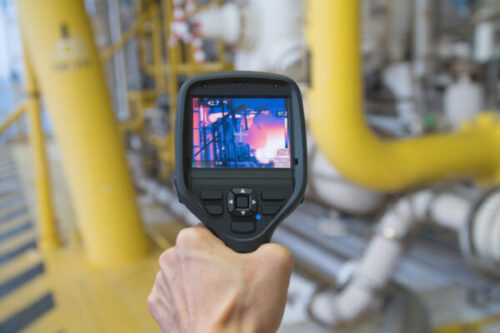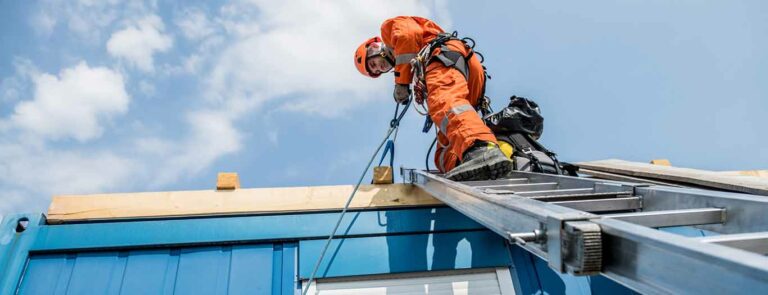The 5-Minute Rule for Roar Solutions
The 5-Minute Rule for Roar Solutions
Blog Article
How Roar Solutions can Save You Time, Stress, and Money.
Table of ContentsExcitement About Roar SolutionsThe Greatest Guide To Roar SolutionsRoar Solutions for Dummies
In such an atmosphere a fire or surge is feasible when 3 fundamental conditions are satisfied. This is commonly referred to as the "unsafe area" or "burning" triangle. In order to secure installations from a prospective surge an approach of evaluating and identifying a possibly harmful area is needed. The objective of this is to make certain the appropriate choice and installment of tools to ultimately stop a surge and to make certain security of life.
(https://www.video-bookmark.com/bookmark/6634779/roar-solutions/)
No equipment ought to be installed where the surface temperature level of the equipment is higher than the ignition temperature of the given threat. Below are some common dirt hazardous and their minimum ignition temperature level. Coal Dust 380C 225C Polythene 420C (thaws) Methyl Cellulose 420C 320C Starch 460C 435C Flour 490C 340C Sugar 490C 460C Grain Dust 510C 300C Phenolic Resin 530C > 450C Aluminium 590C > 450C PVC 700C > 450C Residue 810C 570C The possibility of the threat being existing in a concentration high sufficient to create an ignition will differ from location to place.
In order to classify this risk an installment is split right into locations of risk depending upon the quantity of time the unsafe exists. These locations are described as Zones. For gases and vapours and dirts and fibres there are 3 zones. Zone 0 Area 20 A harmful environment is extremely most likely to be present and might be present for extended periods of time (> 1000 hours per year) and even continuously Zone 1 Area 21 An unsafe environment is possible but unlikely to be present for lengthy durations of time (> 10 450 C [842 F] A category of T6 suggests the minimal ignition temperature level is > 85 C [185 F] Hazardous location electrical tools maybe developed for use in greater ambient temperature levels. This would certainly showed on the rating plate e.g. EExe II C T3 Ta + 60C( This implies at 60C ambient T3 will not be gone beyond) T1 T1, T2, T3, T4, T5, T6 T2 T2, T3, T4, T5, T6 T3 T3, T4, T5, T6 T4 T4, T5, T6 T5 T5, T6 T6 T6 A T Class ranking of T1 indicates the maximum surface area temperature level produced by the instrument at 40 C is 450 C. Assuming the connected T Course and Temperature level rating for the devices are ideal for the location, you can constantly make use of a tool with a more stringent Division ranking than required for the area. There isn't a clear solution to this question regrettably. It really does depend upon the sort of equipment and what fixings require to be performed. Devices with particular test procedures that can't be executed in the area in order to achieve/maintain third celebration score. Have to return to the manufacturing facility if it is before the equipment's solution. Field Repair Service By Authorised Employee: Complex testing may not be needed nevertheless certain treatments might require to be complied with in order for the equipment to preserve its 3rd party ranking. Authorised personnel must be utilized to carry out the work correctly Repair work need to be a like for like substitute. New element need to be taken into consideration as a direct substitute needing no unique testing of the tools after the repair work is full. Each piece of devices with a hazardous ranking ought to be evaluated individually. These are outlined at a high level listed below, but also for even more detailed details, please refer straight to the standards.
Excitement About Roar Solutions
The equipment register is a thorough data source of tools documents that consists of a minimum set of fields to determine each product's area, technological parameters, Ex lover category, age, and ecological data. This info is vital for monitoring and taking care of the tools successfully within harmful areas. In contrast, for regular or RBI tasting inspections, the quality will certainly be a combination of In-depth and Close inspections. The ratio of Thorough to Shut examinations will certainly be identified by the Devices Threat, which is analyzed based upon ignition risk (the likelihood of a resource of ignition versus the possibility of a flammable ambience )and the harmful location category
( Area 0, 1, or 2). This variation will likewise influence the resourcing requirements for work preparation. When Whole lots are specified, you can establish sampling plans based on the sample size of each Lot, which describes the variety of random tools products to be checked. To figure out the required example dimension, two facets need to be examined: the dimension of the Lot and the classification of inspection, which indicates the level of initiative that should be used( lowered, normal, or boosted )to the assessment of the Whole lot. By incorporating the classification of inspection with the Great deal size, you can then develop the appropriate being rejected standards for an example, indicating the permitted variety of malfunctioning products discovered within that sample. For even more details on this process, please refer to the Power Institute Standards. The IEC 60079 standard suggests that the optimum interval in between inspections should not surpass three years. EEHA evaluations will also be conducted outside of RBI projects as component of scheduled maintenance and tools overhauls or fixings. These assessments can be attributed towards the RBI example dimensions within the influenced Whole lots. EEHA evaluations are carried out to identify faults in electric tools. A heavy scoring system is important, as a single tool might have numerous mistakes, each with varying levels of ignition risk. If the mixed rating of both inspections is much less than twice the fault score, the Great deal is deemed acceptable. If the Whole lot is still taken into consideration inappropriate, it needs to undertake a complete inspection or reason, which may cause stricter assessment methods. Accepted Lot: The sources of any kind of mistakes are identified. If a common failing mode is found, additional tools might require maintenance. Faults are categorized by extent( Security, Stability, House cleaning ), guaranteeing that urgent problems are assessed and resolved quickly to mitigate any kind of influence on safety and security or procedures. The EEHA database need to track and tape-record the lifecycle of faults together with the rehabilitative activities taken. Applying a robust Risk-Based Assessment( RBI )technique is crucial for ensuring conformity and safety in taking care of Electric Devices in Hazardous Areas( EEHA) (high voltage courses). Automated Fault Scoring and Lifecycle Monitoring: Effortlessly take care of faults and track their lifecycle to enhance evaluation precision. The introduction of this assistance for risk-based evaluation better reinforces Inspectivity's placement as a best-in-class remedy for regulatory compliance, along with for any asset-centric inspection use situation. If you are interested in finding out extra, we welcome you to ask for a presentation and uncover exactly how our option can transform your EEHA management procedures.
Roar Solutions Fundamentals Explained

In terms of explosive threat, an unsafe location is a setting in which an explosive atmosphere exists (or may be anticipated to be existing) in amounts that call for unique safety measures for the building and important site construction, installation and use of tools. eeha certificate. In this post we check out the challenges dealt with in the workplace, the risk control procedures, and the needed proficiencies to function safely
It issues of modern-day life that we produce, keep or manage a variety of gases or liquids that are deemed flammable, and a series of dusts that are regarded flammable. These substances can, in certain conditions, form explosive atmospheres and these can have major and heartbreaking repercussions. The majority of us know with the fire triangle remove any kind of among the 3 components and the fire can not happen, yet what does this mean in the context of dangerous areas? When damaging this down into its most basic terms it is basically: a mix of a particular amount of release or leak of a specific substance or product, combining with ambient oxygen, and the visibility of a source of ignition.
In a lot of instances, we can do little regarding the levels of oxygen in the air, but we can have considerable influence on resources of ignition, as an example electric devices. Harmful locations are documented on the hazardous area category illustration and are determined on-site by the triangular "EX-SPOUSE" sign. Right here, among other essential information, zones are divided into three types depending upon the risk, the possibility and period that an explosive environment will certainly exist; Zone 0 or 20 is considered the most unsafe and Area 2 or 22 is regarded the least.
Report this page